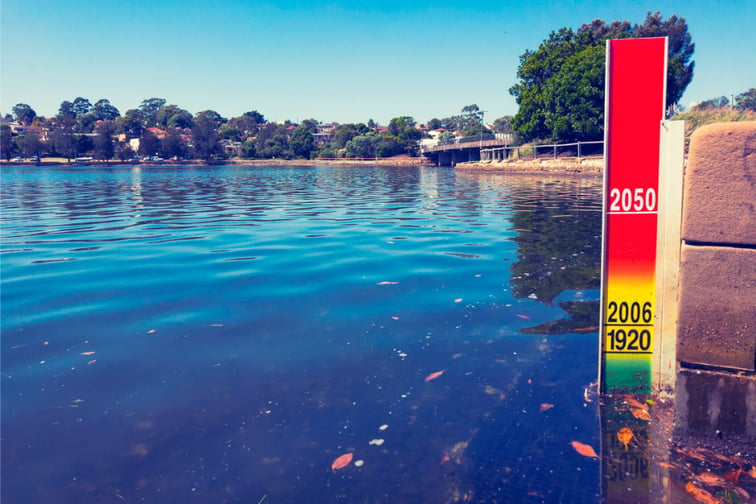

Properties worth $1 million on the Petone foreshore could cost $100,000 a year to insure as early as 20 years from now, a climate risk expert warns as the government decides whether to set up public flood insurance.
Climate change has not only driven up the frequency of extreme weather events; it has also driven up sea level, putting thousands of homeowners at risk of unsustainable living conditions, spiralling premiums, or having cover pulled altogether.
New data has shown that the land in Wellington’s Petone foreshore is sinking. In just 18 years, the sea level rise will be enough to cause rare storms – the kind of which only occur once a century – to happen every year.
Climate economist and modeller from Climate Sigma Belinda Storey said a house worth $1 million sitting on the Petone foreshore currently pulls in flood insurance premiums of around $1,500 a year. She predicted that this number would start to double every two to three years.
"In 20 years' time … if the government was to step in and say 'we'll start covering this', that subsidy for that house would be $100,000 per year – and it will keep going up,” Storey said.
While insurers were cross-subsidising the riskiest places, Storey warned that eventually insurers would have no choice but to pull cover. She also believed a public subsidy for flood insurance was a bad idea that would only increase risk to life by encouraging people to remain in harm's way.
"Providing public insurance seems like you're helping people,” she said. “But if it subsidised people to stay in [a] hazardous location, inevitably, [it] will result in lives lost."
Storey pointed out that the US had allowed a mass, coastal-property development in the 70s and 80s, including in the Ninth Ward of New Orleans – which was devastated by Hurricane Katrina in 2005, RNZ reported. She said the better alternative was for government to make insurers provide data to a regulator about properties or areas where cover had been withdrawn. Policy would be better-designed if regulators were “not flying blind” and knew where the level of insurance retreat was, she said.
Research by Aon from September 2021 showed 5% of properties in Aotearoa – almost 90,000 homes – had risk that, fully priced, would cost flood risk premiums worth 1% of the property's value. Another 2% of homes faced premiums of 2% their value or more – more than $10,000 a year for insurance.
Research from 2020, which Storey co-authored, predicted that by 2050, as many as 10,000 properties in Wellington, Christchurch, Auckland, and Dunedin would become uninsurable.
Weather-related insured losses have doubled in the last five-year period, with claims for extreme weather events hitting consecutive record highs in 2020 and 2021. The increasing frequency and intensity of storms has caused concern that an ‘insurance retreat’, where insurers pull cover or hike premiums so high they become unaffordable, could happen, RNZ reported.
The government is still deciding whether to step in and provide cover through subsidies or a national scheme, put some mitigation in place including extending the life of insurance cover, or do nothing.
Treasury's advice is expected to be given within the next month, with Cabinet decisions due by the end of the year.
